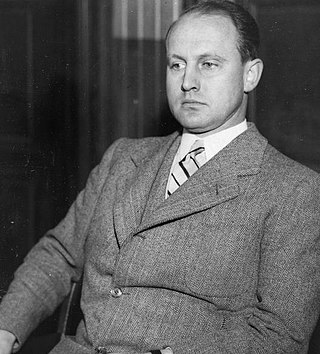Related Research Articles

The Norwegian Academy of Science and Letters is a learned society based in Oslo, Norway. Its purpose is to support the advancement of science and scholarship in Norway.

Holmsbu is a small village located in Akershus, Norway.

Slemmestad is a village in Røyken in Asker municipality in Akershus, Norway. Slemmestad is located on the west bank of the Oslofjord, west of Oslo.

Norwegian Institute for Agricultural and Environmental Research (Bioforsk) was a national Norwegian R&D institute specialising in the fields of agriculture and food production, environmental protection and natural resource management. In 2015, it became part of the merger that resulted in the Norwegian institute for Bioeconomics (Norsk institutt for bioøkonomi).
The International Centre for Geohazards (ICG) is a Norwegian, multidisciplinary research and educational institute, hosted at the Norwegian Geotechnical Institute (NGI). According to the institute's website, ICG's research activities focus on the assessment, prevention and mitigation of geohazards, in which the latter is defined as a geological state that represents or has the potential to develop further in a situation leading to damage or uncontrolled risk. From this definition, it becomes clear that geohazards are widespread, both spatially and temporally, and are always related to geological conditions and processes in both offshore, coastal and onshore environments.
Andreas Holmsen was a Norwegian historian, author, and educator. He is most commonly associated with his textbook Norges historie fra de eldste tider til 1660, which is a standard introduction to early Norwegian history.
Norwegian Social Research is a state social science research institute based in Oslo, Norway. It is part of Oslo Metropolitan University, and was formerly an independent state agency from its establishment in 1996 until 2014. Together with the Work Research Institute, the Norwegian Institute for Urban and Regional Research and the National Institute for Consumer Research, it now forms the Centre for Welfare and Labour Research at Oslo Metropolitan University.
Helmer Hartmann Dahl was a Norwegian electrical engineer and director of research at the Chr. Michelsen Institute.
The Norwegian Institute for Cultural Heritage Research is a cultural heritage research institute based in Oslo, Norway.
The Norwegian Forest and Landscape Institute was a research institute based in Norway.

Gjelleråsen is an area which constitutes part of Oslomarka outside Oslo, Norway.

Norway's Resistance Museum also known as the Norwegian Home Front Museum is a museum located at the Akershus Fortress in Oslo.

Anatomigården is a historic house located on the north side of Christiania Torv in Oslo, Norway.

Polhøgda is the home of the Fridtjof Nansen Institute. It was originally built as the private home of Norwegian explorer Fridtjof Nansen. The manor home's architecture is Roman Revival, and the former estate lies between Lysaker and Fornebu in Bærum, Norway.

Hans Peter L'Orange was a Norwegian art historian and classical archaeologist.
Brit Denstad is a Norwegian civil servant.
Nilmar Oskar Charles Janbu was a Norwegian engineer and geotechnician.
Total sounding (TS) is a sounding method performed as part of geotechnical investigation. The sounding combines conventional rotary-pressure sounding with bedrock drilling, including rotation, ramming and flushing modes. The result indicates sediment stratification, occasionally soil type and may verify depth to bedrock.
Rotary-pressure sounding is a method of testing soil conditions that might be performed as part of a geotechnical investigation. A series of rods, with a specially designed tip, is forced into the ground under downward pressure. The rotation and speed of insertion are maintained at a constant rate, and the amount of force required to maintain that rate is measured. The results can be interpreted to provide information about sediment stratification, and sometimes also the type of soil and the depth to bedrock.

The Department of Informatics at the University of Oslo is the oldest and largest department for informatics in Norway. The department was in 2017 ranked number 1 in Norway, 3rd in Europe, and 12th in the world in Computer Science and Engineering by Academic Ranking of World Universities.
References
- 1 2 Hansen, Geir Karsten (2023-10-25). "Norges Geotekniske Institutt – Store norske leksikon". Store norske leksikon (in Norwegian). Retrieved 2024-02-16.